Where have Kolkata’s Chinese gone?
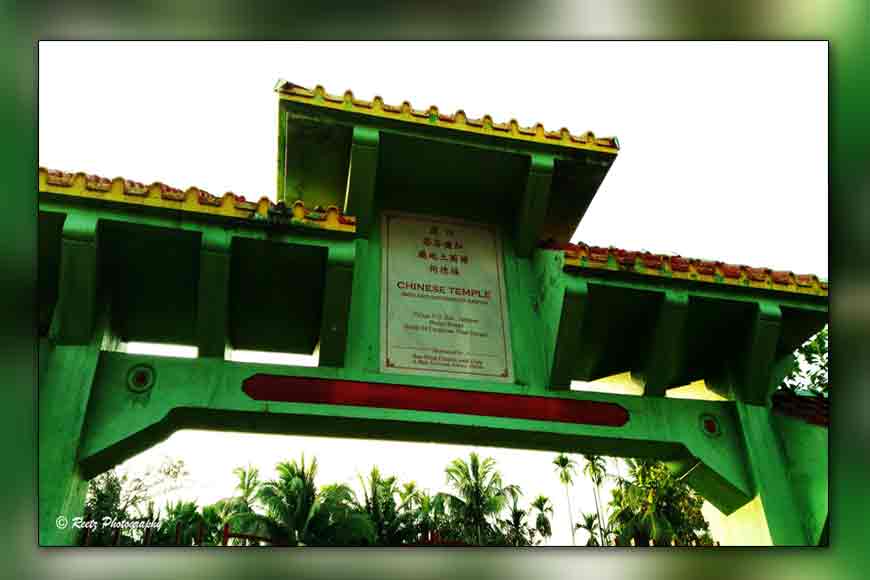
Reetwika Banerjee is a cyber security expert and a travel blogger
You will hardly find any Chinese family residing at Chinamantala. But where is this place? Well, this is the spot popularly known as Achhipur. Remnants of only two ancient Chinese settlements have survived the ravages of time – a traditional Chinese temple and the grave of India’s first Chinese forefather Tong Acheew. They are the only two signs reminding you that a vibrant Chinese community once existed in Bengal. This silent hamlet springs to life during Chinese New Year, when many Indian Chinese from across the country come here to pay tribute to Acheew, and enjoy the beats of ethnic drums or perform the dragon dance, with a typical Chinese carnival theme ringing in the air.
Achhipur is a small village near Budge Budge, about 50 kilometres from Kolkata Airport via Diamond Harbour Road. There are no direct bus or train route to reach the place, but can be easily accessed byroad.Though the distance from Kolkata is very less, yet due to extreme conditions of Diamond Harbour Road and then Budge Budge Trunk Road, it took us almost two and half hours to reach the place.
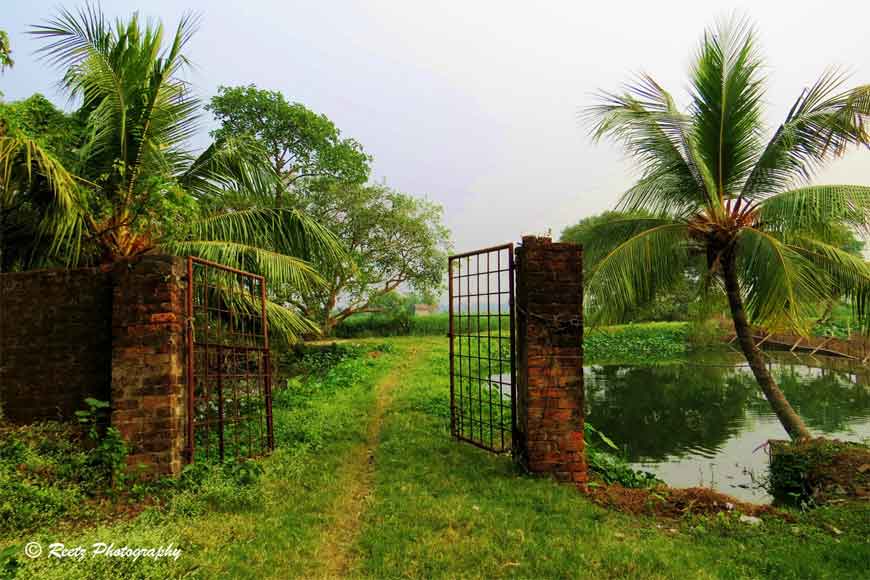
Crossing Budge Budge BDO Office, we drove straight till Pujali (around 5 kilometres). Took a tea break at Shivtala which looked more like a local marketplace. We asked the directions for Chinamantala from the old Muslim tea vendor who guided us with confidence to our destination. He asked to take left from the next Y-junction popularly known as Boro Battala. From there, the Chinese temple was on right within a kilometre’s drive through the village road.
Unfortunately, we were late by an hour to reach the temple and were very disappointed to find it closed. The massive green painted entry porch seemed to have been built in recent times and appeared quite well maintained. There were some Chinese inscriptionson the marble plaque along with English engravings. The temple belongs to the God and Goddess of Earth and is maintained by Kolkata’s Gee Hing Church and Club. We could not even locate a single person around to ask about the temple timings. Little hesitantly, we parked our car opposite to the main gate and peeped in through the grills. Nothing much could be seen except a green lawn and a red coloured insignificant construction at the right-hand corner of the ground.
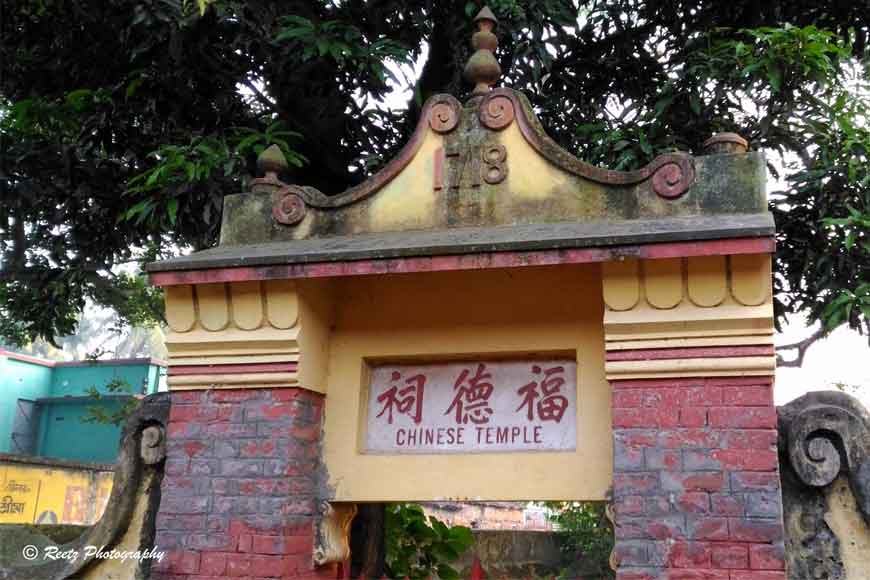
There was a rustic tea shop just beside the temple, which too was closed. Highly disappointed, as we were about to leave the place, a middle-aged lady smiled at us. From her attire, she looked like a native villager. We too smiled back. This created an immediate air of confidence and sparked a conversation. She was a primary school teacher and she took us back to the rich history of the place through her narrative.
1718 AD, a young courageous Chinese tea trader named Tong Acheew had landed on the shores of Bay of Bengal, near Budge Budge with the hope of conducting trade with English East India Company. It took him years of struggle to establish a trading relationship with the Company. During late 1770s,after being successful in persuading Warren Hastings,the then Governor General of British India, Tong Acheew was permitted to start the first Chinese owned sugar mill of the country. That opened doors to the influx of hordes of Chinese workers from the Hakka and Cantonese communities, who settled in the villages in and around the sugar mill.
Since the locality was just beside the mighty Hooghly, the land was very fertile here which flickered another bizarre idea in the trader’s mind. Within a year, Acheew took on lease a huge agricultural land from the Britishers for cultivating sugarcane, which in turn would serve the purpose of sugar supply for his mill. To support the entire supply chain, there was huge demand of cheap labour. Soon, the workers’ families too were immigrated from China and the small village flourished to a full-grown Chinese community. The native hamlet was renamed to Acheewpur in his honour and the exact location of the sugar mill got its name changed to Chinamantala. With the passage of time, Acheewpur has become modified to Achipur, the name by which it is known today.
Also Read
MEET THE ‘DON OF TANGRA’ MONICA LIU
Tong Acheew was a religious man and deeply worshipped aboriginal tutelary Chinese divinities named Tudi-Gong (God & Goddess of Earth). During his first visit to Calcutta in 1718, he carried two small idols of these deities which he established in the form of a small shrine. Later, the sugar mill was constructed just beside it. Natives, majority of whom were Hindusand Muslims, revolted against the institutionalization of foreign deities in their homeland. So, he renamed the deities with Indian names – Khoda and Khodi. He was also very liberal and constructed temples for Lord Shiva beside the Chinese shrine. However, there is no Shivalinga within the premises. With time, it came to be known as Chinese temple. Even today, a priest offers daily prayers to both deities with equal esteem and belief, making it a one of its kind. Hardly in the world there would be a second instance of such secularism.
From the lady’s emotional attachment with the place, it was clear that the temple does hold a very special corner in the hearts of all the villagers. She guided us to the shrines through an exit gate. That gate was usually used by the priest and strictly restricted to visitors. Nevertheless, standing at the gate itself, we could see the temple woodworks, Chinese pillar calligraphy, the shrines and the offerings. The red coloured insignificant construction at the right-hand corner of the ground which we saw from the main entrance was the original temple shrine. The ceiling height was so low that we had to literally crawl inside. It was such an unusual experience indeed.Regrettably, photography was restricted inside.
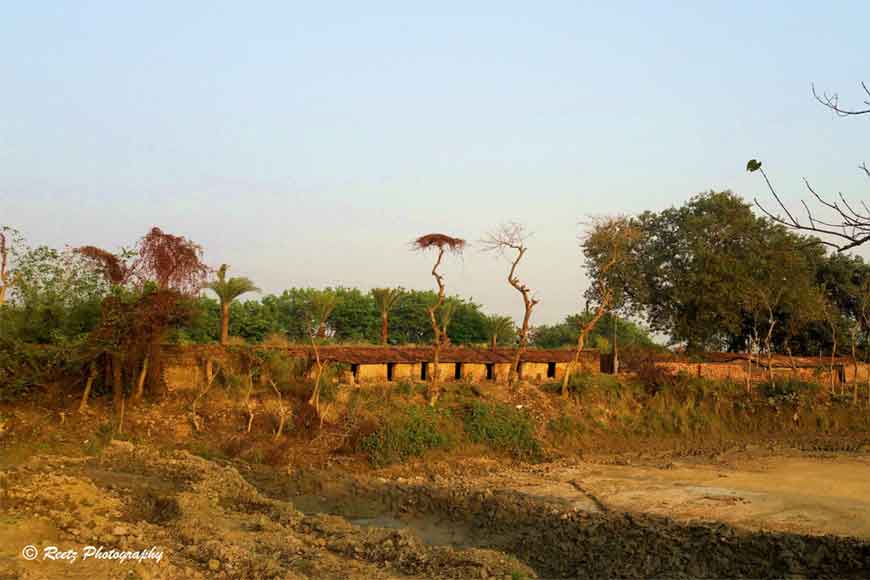
Upon asking about the tomb of Tong Acheew, she advised us to park our car near the temple and walk half a kilometre along the tapering muddy road towards the river. Then, giving a second’s pause, she herself offered to accompany us to the place as it would be difficult for us to locate it as outsiders.
For the next fifteen minutes, she kept narrating Tong Acheew’s life story and his sad demise. Within few years of his settlement, the sugar plantations and factory were both running at a huge profit. Even the Britishers were happy. But luck was not on his side. Tong Acheew was diagnosed with a fatal ailment and he succumbed to it. Soon after he passed away, the Britishers took control of his sugar mill and started cultivating indigo on the same land, ushering nightmare for Chinese labourers. The poor workers started worshipping Tong Acheew as a divine self. They also constructed a grave in his memory just beside the Hooghly River with the hope of protection from the clutches of inhumane indigo planters of East India Company.
Within a span of just two years, thousands of Chinese nationals who had settled along the banks of Budge Budge, started migrating towards the mainland of Calcutta in search of peaceful work environment. Most of them landed near Tiretta Bazar, now popularly known as China Town and Acheewpur looks deserted since then. On a different note, if we flip through the pages of history, Acheewpur marked the beginning of Chinese settlements in India.
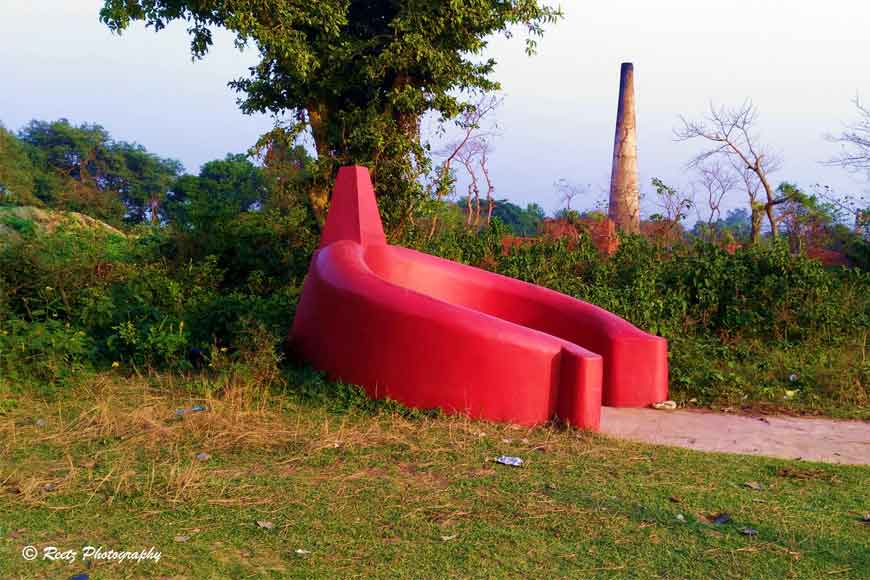
After walking for a while, she pointed us to take a shorter route through a brick factory as it was about to dusk. As time sailed through 250 years, the Hooghly River changed its courses several times. Years ago, the original graveyard constructed by the Chinese residents got engulfed into the depths of the river. However, to commemorate the memory of Tong Acheew, a U-shaped red coloured grave has been newly constructed near the present-day Budge Budge Ferry Ghat and is often used as a Hindu cremation ground.
The view of the setting sun from the holy site was a mesmerizing treat.We thanked the lady for her time and valuable insights about the rich past of Chinamantala. If we did not happen to come across her, our trip would have been certainly incomplete.









